A lot of newbies don’t know how to store and take care of their expensive telescopes and accessories. Many people assume their telescopes and eyepieces are much more fragile, delicate, and difficult to maintain than they actually are. On the flip side, we can attest to many people who completely neglect these scientific instruments. This article will attempt to clear up some of the confusion associated with storing, transporting, and maintaining telescopes and accessories.
The most important part of taking care of your telescope is to be vigilant. Problems like bugs or moisture can take weeks or months to cause damage, but they are easily avoided if you just check on your telescope every once in a while; if you use it frequently, this won’t even be much of an effort. When it comes to making your telescope last a lifetime, being a careful owner is far more important than what container you put it in or what cleaning products you use.
Storage Cases: Yay or Nay?
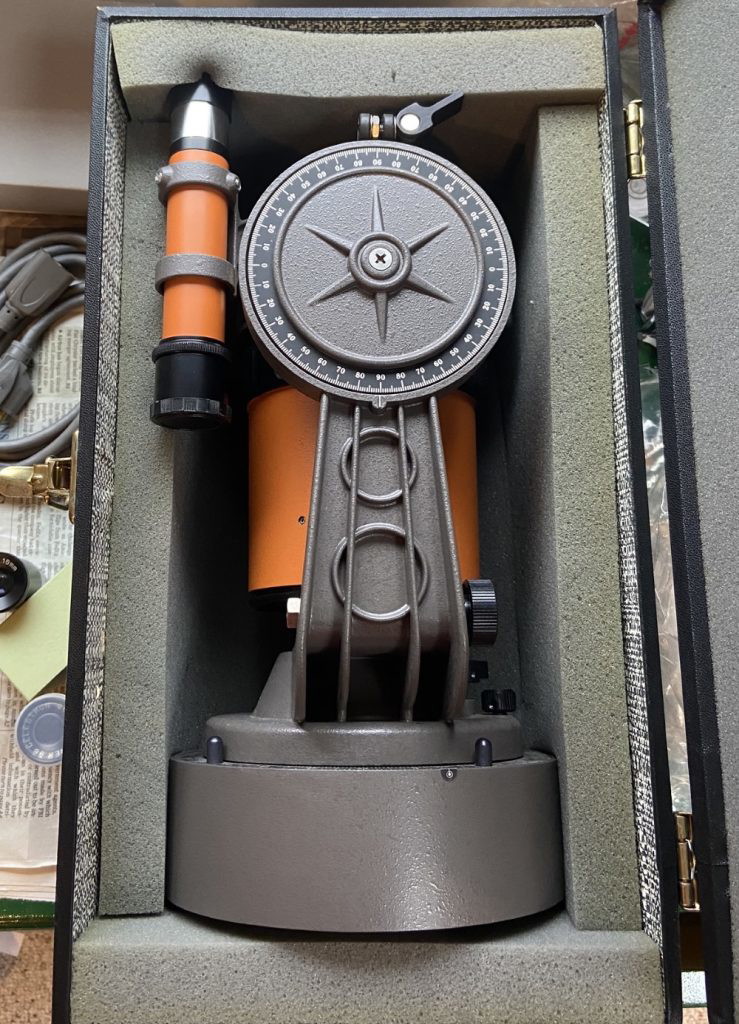
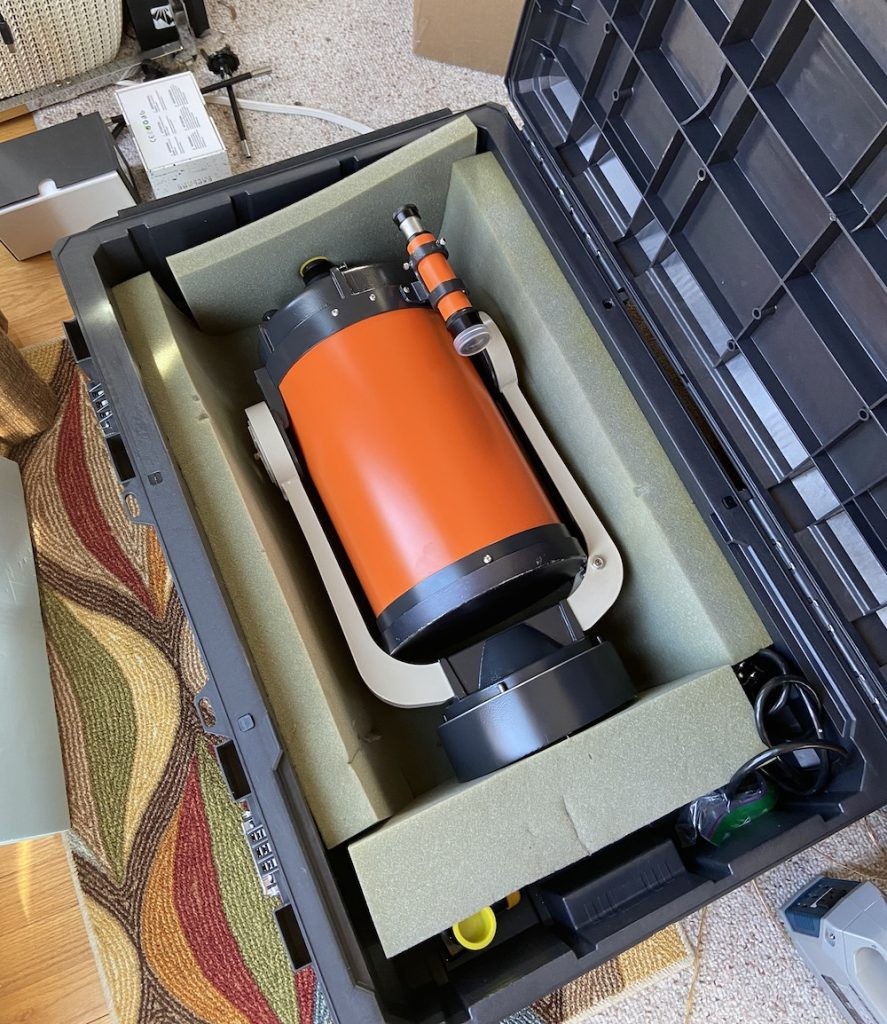
Many people assume their telescope needs a case. This is usually not true. A case is really only necessary if you are flying somewhere with your telescope or dealing with an expensive and awkward/heavy optical tube or mount, which would benefit from a rolling case. This excludes most telescope owners.
Schmidt-Cassegrain telescopes are probably the most likely candidates for a case. Their corrector plates are easily shattered, and their short, stubby tubes are prone to rolling around. But small SCTs with fork mounts, like the Celestron NexStar telescopes, can be stored or moved by leaving the corrector attached to the mount and keeping it upright with the corrector facing down. A larger optical tube can similarly be stored (albeit dismounted) with the corrector plate facing downward to prevent the accumulation of any dust and to keep the corrector plate protected from any possible falling objects. For transportation in a vehicle, you can buckle the telescope in with a seat belt, put it in a box, crate, bin, or anything that prevents it from rolling, and/or have stuff stacked on top of it.
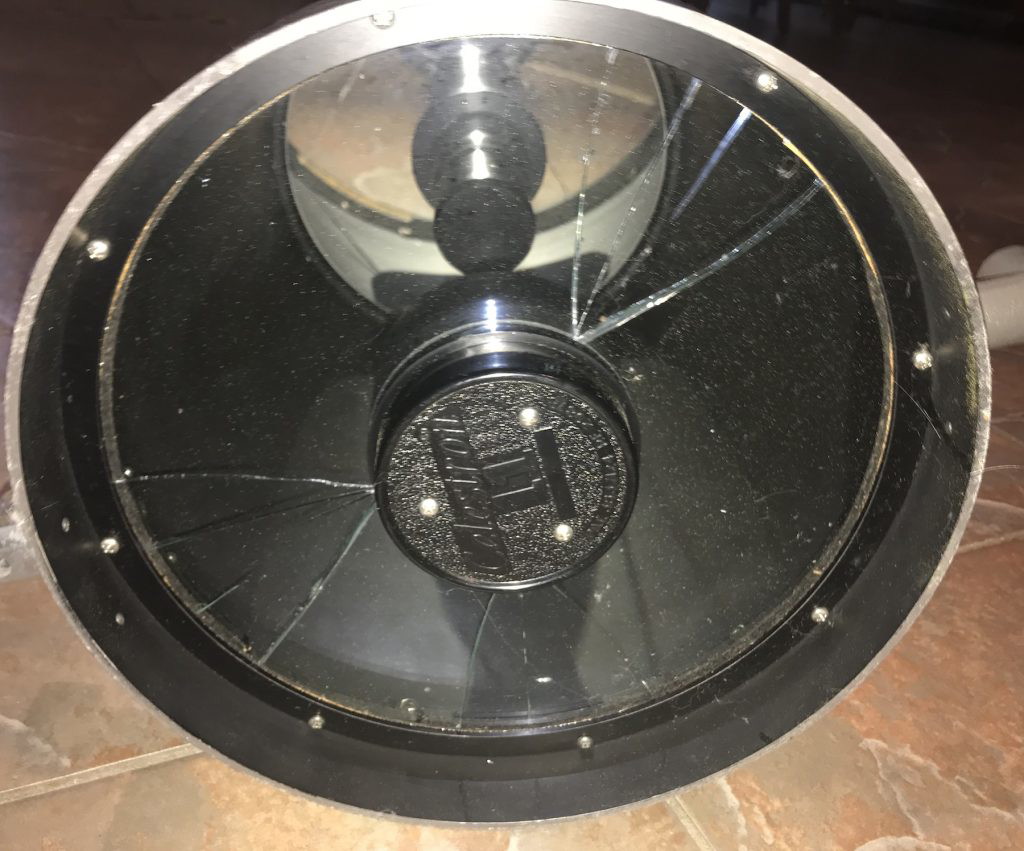
Maksutov-Cassegrains are the same story as Schmidt-Cassegrains when it comes to transportation and storage, though smaller ones can be stuffed under a seat or in a backpack if need be.
Refractors can benefit from a case, as with a Schmidt-Cassegrain. However, for storage, leaving the telescope upright with the lens down in some fashion (albeit rested against a wall or otherwise braced to prevent a fall) or just on its mount is just fine. For transport, long refractors can be wrapped in a towel or blanket; short ones can be transported the same way an SCT or Mak is in any sort of rigid container.
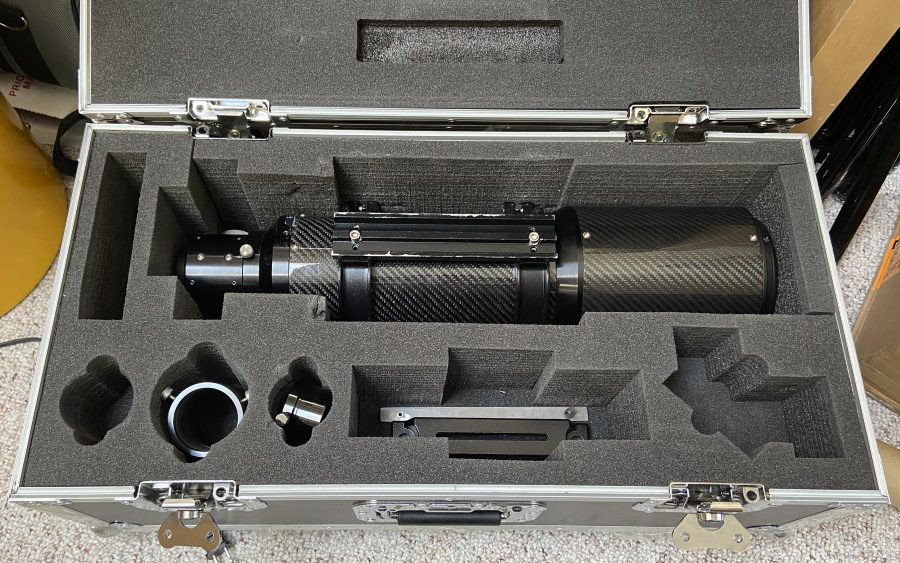
Newtonian reflectors are practically invincible compared to all the other types of telescopes, which use lenses. Even if you did drop your reflector or have it roll in your car and dent the tube, it wouldn’t matter much. Theoretically, the best way to keep dust out is to store the telescope with the front end down. However, this is hard to do and puts stress on the primary mirror cell, so we usually recommend putting the telescope upright. Dobsonians are best stored with the optical tube assembly attached to the mount pointed straight up. For solid-tubed instruments, wrapping the tube in a towel or blanket for transport in a car is best, while truss tube instruments are usually transported with the lower tube assembly or mirror box sitting in the base and the other parts wherever they fit.
Mount heads can really be stored however you want: in a case or bin, assembled on their tripods, or just laying around. The only thing to keep in mind is that if you don’t use your mount frequently, you should remove any disposable batteries to prevent them from corroding or exploding. Tripods also have very lax storage requirements, though a soft case with a shoulder strap can be nice. Hand controllers, finder scopes, and other add-on parts of your rig can be left affixed to whatever part they attach to or stored separately; this is really up to you. Leaving your finder attached to your telescope does entail a slightly higher risk of damage, but it also means it will be more likely to consistently stay aligned with your telescope, and you’re unlikely to forget to bring it with you.
The most delicate items in your astronomy arsenal are probably your eyepieces and other accessories that go in the focuser, like Barlow lenses and filters. They’re small, easily dropped, and expensive. You should avoid keeping them on the “eyepiece rack” provided with many beginner telescopes, as they will bounce around if you leave them that way in a car, and in the field, storing them with their caps on is annoying (and a great way to lose your caps), while storing them with their caps off invites dew, fingerprints, and other accidents waiting to happen.
A good hard case with pluck foam is a must-have for your eyepieces. Some of our favorite brands for these cases are Pelican, Seahorse, Vanguard, and Harbor Freight, though just about any case will do. Custom wood cases are an option too, but we find a pluck foam case to be a little safer. You can keep your eyepieces in a case uncapped, but with eyepieces that have prominent lenses at the bottom of the barrel, as well as Barlow lenses, we’d recommend leaving the caps on to avoid annoying bits of foam, dust, and other particles appearing in the view. Filters should remain in their individual cases even if stored in a larger container. Keeping dehumidifier silica packets in your case is also a must to avoid mold and other fungus getting on your optics when the case is closed. Some people also add warmers to their eyepiece case, such as lizard cage heaters, to keep their eyepieces from dewing or frosting up when in use by keeping them warm in the case.
Where should I keep my telescope?
The best place to keep your telescope is indoors in a well-ventilated room with the best air filters possible, away from pets, and as free of moisture as is possible. However, this is not only impossible for some but it also inhibits cooling your telescope down to the nighttime ambient temperature for many people.
In reality, as long as your telescope is kept free of bugs, moisture, pollen, extreme dust, dirt, or anything else that could cause damage to optics, corrosion to mechanical parts, or issues in electronics, you’re probably fine. Many people keep their telescopes in a shed or garage. However, you should make sure that bugs and rodents do not make a home in your telescope. This might mean additional covers like shower caps over the rear of a Dobsonian, keeping your scope in a case, or even storing it under a weatherproof cover even if stored indoors.
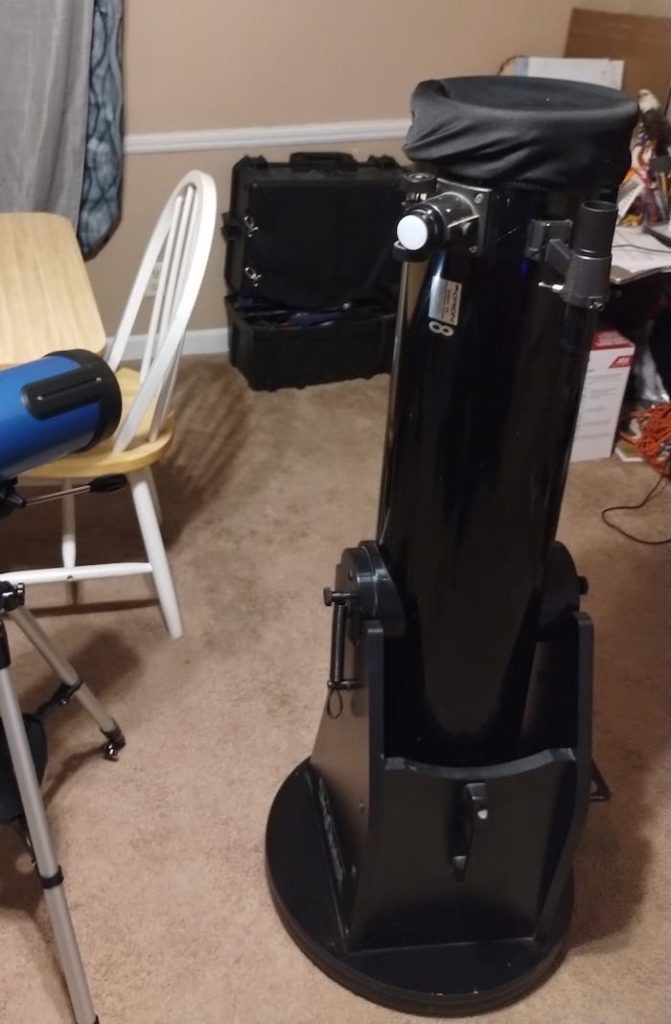
Outdoor telescope covers
Weatherproof covers can be used to protect your telescope during a star party, and some people use heavy-duty ones like the Telegizmos 365 cover for semi-permanent “observatory” setups in their backyards in the absence of a dome. While these covers can work for such a task, it will require you to keep a dehumidifier and permanent outdoor electrical cabling for your setup, and water accumulation as well as bugs and rodents are a huge concern even if your telescope has its caps on underneath. We wouldn’t recommend you leave any telescope outside, even under a cover, for more than a few days, such as at a star party or on vacation.
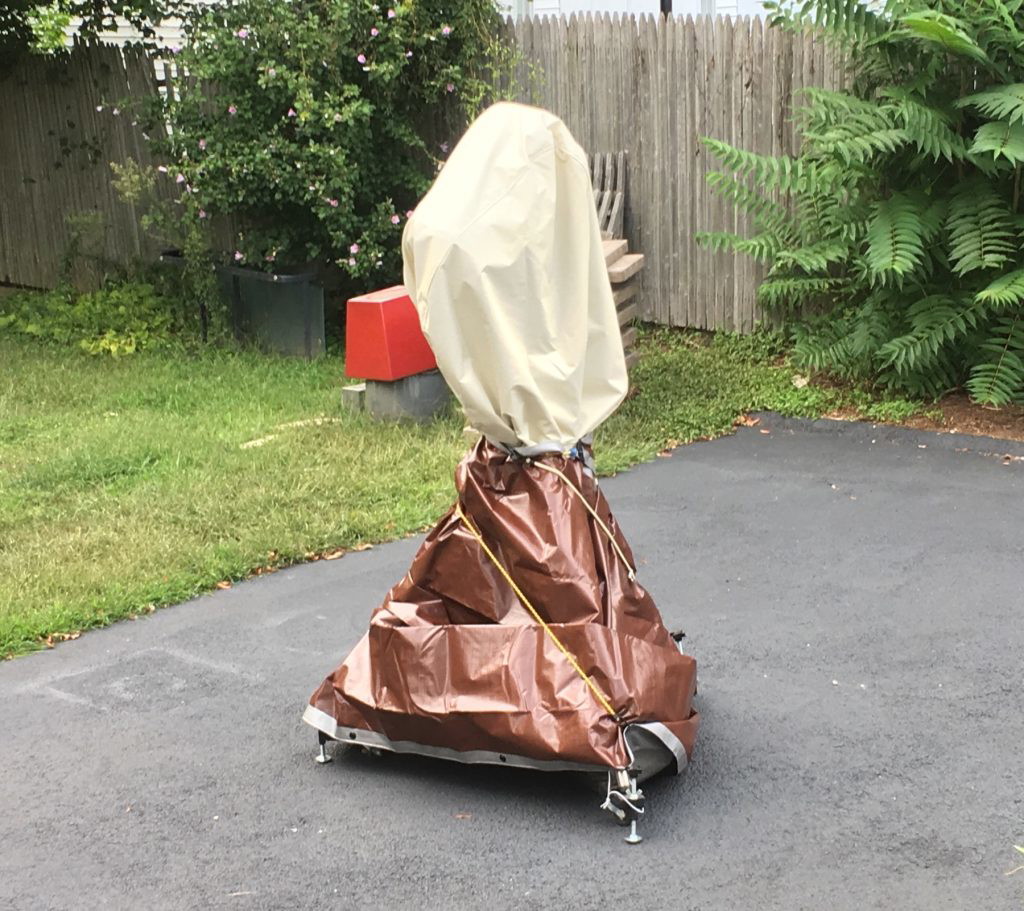
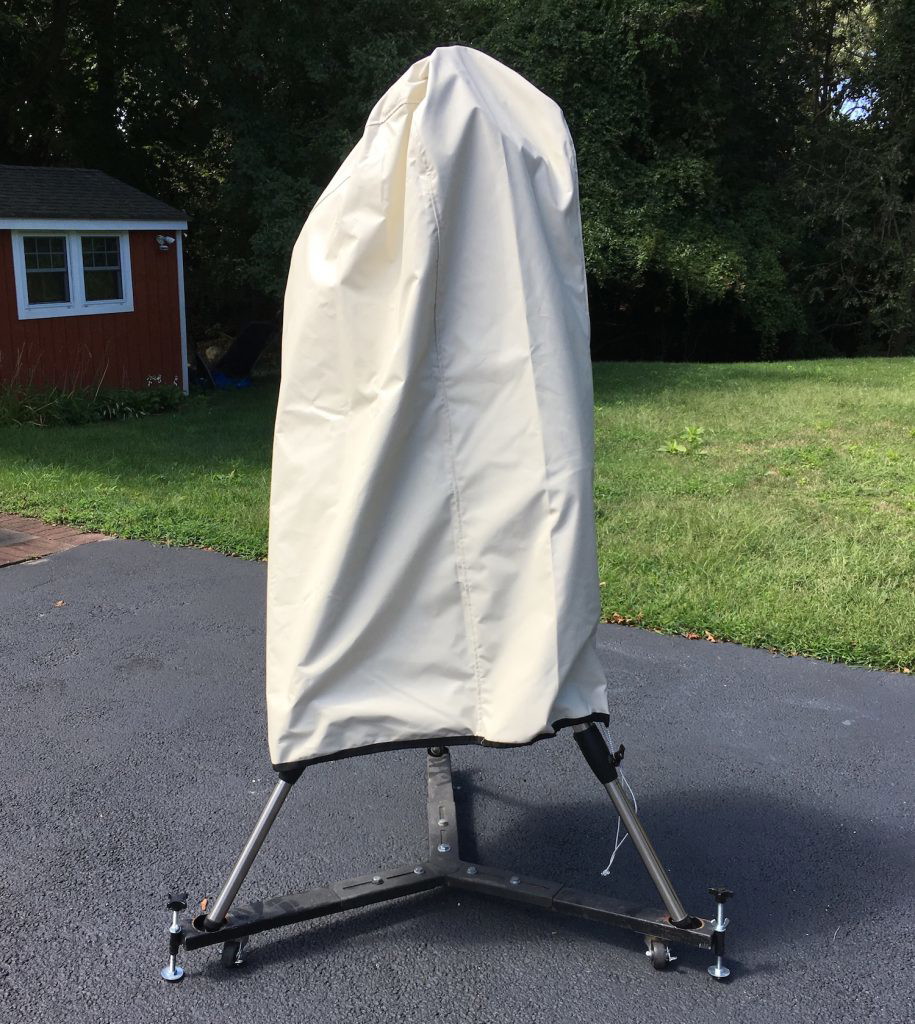
If you’re going to a star party or other event where you know the skies will remain clear (or at least free of rain/snow) for a few days, a dedicated cover is nice, but even just a tarp and/or space blankets will do. Space blankets will help keep the telescope cool in the daytime sun and allow it to adapt to the ambient temperature quicker when night falls. Many star parties are in dusty or dirty environments, so having some kind of protection from that as well as from birds, potential showers, curious onlookers, and pollen is good to have.
Maintenance tasks for telescopes
Cleaning – When do I need to do it?
In the case of any telescope, optic cleaning is usually only necessary if there is an immediate cause for concern, such as fingerprints, pollen, or bug/rodent debris. If you leave your scope sitting for a long time, it is probably worth cleaning your mirrors and lenses once every year or two if there is a thick accumulation of dust.
Eyepieces and other accessories, like Barlow lenses or filters, are a different story. You will inevitably smudge them, and they will get moisture on them. Your eyelash oils and tears will contaminate the eye lens in the absence of anything else. If anyone with makeup or eyeliner uses them, that gunk deposits on the eye lens and eye guard too. Also, any smudges will cause noticeable issues at the eyepiece, such as glare or fuzziness.
In addition to storing them in a dry, sealed case as mentioned above, to prevent corrosion of optical coatings, you should probably clean your eyepieces every 5–10 times you take them out, barring something significant getting them dirty before that span, in which case you should clean your eyepiece immediately. Barlow lenses and filters can be cleaned less often, though you should still clean them once a year or if you get a fingerprint on one.
Our articles on cleaning telescope mirrors and lenses go into more detail on how to clean your optics; it’s not nearly as scary as it sounds. Telescope mirrors do have to also be recoated eventually, though this isn’t nearly as frequently necessary as some suggest.
Collimation – When do I need to do it?
Even if stored undisturbed, many telescopes will eventually go out of collimation on their own. The expansion and contraction of parts from heat and temperature, as well as the weight of the telescope’s optics, can and will cause things to shift around. However, there’s not much point in collimating your scope until you set it up again, though if your telescope is rigid enough to hold collimation during transport (such as a Schmidt-Cassegrain), you may want to just collimate ahead of time if you’re in a rush when you arrive at your observing location.
Our article on collimation goes over the process for all types of telescopes in detail.
Electronics maintenance
As with any electronic device, never leave disposable batteries like AA, AAA, C, or D batteries in your telescope mounts, finders, and accessories for very long periods of time. They can not only corrode and make a mess, but the cheap terminals used in many telescope parts can be difficult to clean enough to restore function if this happens. Many finders use CR2032 coin batteries, which you should always carry at least one spare of and change every couple of years, even if the charge doesn’t seem to have run out. And remember to turn your finders off—the batteries can last for days at a time on a red-dot sight or Telrad, but it’s not good for the electronics to be left on that long.
Computerized telescope mounts are worth upgrading the software on as often as is convenient. Older devices can have issues with corrupted software, which is better to just prevent in the first place, and software updates offer bug fixes and new features as well.
Mechanical maintenance
Since telescopes are carried, bumped into stuff, and rolled around in vehicles or on dollies, vibrations will inevitably jostle things loose. It’s worth periodically tightening fasteners such as the lock knobs in a mirror cell, the center bolt on a Dobsonian base, or the hinge bolts on tripods before they fall off or start to rattle. Don’t overtighten anything, of course.
Retaining rings on lenses can come loose, too. If your eyepiece, Barlow, or filter sounds like it has a rattle, tightening the bottom retaining ring with a small screwdriver, fingernail, or spanner wrench is easy to do, and you should do it before it rattles enough to cause internal damage to the glass.
Dobsonian telescopes’ bearings can get dust and dirt in them and should be cleaned periodically, especially if they start to bind or make scratching noises. Gently rubbing bar soap or car wax on them will also improve smooth motions, particularly on scopes that have sticky bearings by default.
Equatorial mounts, alt-azimuth mounts with gears, and rack-and-pinion or helical focusers should be lubricated every so often with whatever product you deem fit. Keep in mind that WD-40 is not actually a lubricant, however. Users in very cold climates may want to degrease their entire setup and use a special low-temperature lubricant for their mount and other telescope parts.
Lastly, older Schmidt-Cassegrain telescopes used adhesives and lubricants that outgassed over long periods of time and could fog the corrector. Removing the corrector, cleaning it as normal, and letting the tube air out for a bit is a good idea.
Read: Lifetime limiting factors of different telescope components
